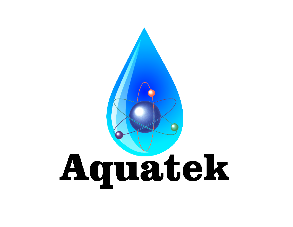Glossary of water terminology and definitions-p
Particulate
A term used to describe visible sediment particles, used as both singular and plural.
Parts Per Billion (ppb)
A
basis for reporting the results of water and wastewater analysis,
indicating the number of parts by weight of a dissolved or suspended
constituent, per billion parts by weight of water or other solvent. One
part per billion is equal to one microgram per liter, the preferred
unit.
Parts Per Million (ppm)
A
common basis for reporting the results of water and wastewater
analysis, indicating the number of parts by weight of water or other
solvent. In dilute water solutions, one part per million is practically
equal to one milligram per liter, which is the preferred unit. 17.l ppm
equals one grain per US gallon. One ppm equals one pound per million
pounds of water.
pH (potential of Hydrogen)
An
expression of the acidity of a solution; the negative logarithm of the
hydrogen ion concentration (pH 1 very acidic; pH 14, very basic; pH 7,
neutral). e.g., pH 5 is 10 times the acidity of 6 and 100 times the
acidity of 7. pH is a measure of intensity and not capacity. It is the
logarithm of the reciprocal of the hydrogen ion concentration of a
solution. The neutral point of 7 indicates the presence of equal
concentrations of free hydrogen and free hydroxide ions.
Pharmaceutical Grade Water
The
definition of six grades of water by the U.S. Pharmacopoeia is as
follows: 1.) Purified water 2.) Water for injection 3.) Bacteriostatic
water for injection 4.) Sterile water for inhalation 5.) Sterile water
for injection 6.) Sterile water for irrigation.
Phenolphthalein
An acid-base indicator which produces no color in an acid solution but turns pink or red in an alkaline solution.
Physical Adsorption (Van der Waals Adsorption)
Binding of adsorbate to the surface of a solid by forces whose energy levels approximate those of condensation.
Physical Stability
The
quality which an ion exchange resin must possess to resist changes that
might be caused by attrition, high temperatures, and other physical
conditions.
Point of Entry (POE)
A water treatment device which installs at the main inlet to a building and acts as centralized treatment.
Point-of-Use (POU)
A water treatment system designed to connect at the actual point-of-use for water; countertop or undersink treatment systems.
Polyphosphate
A
sequestering agent used to tie up hardness and iron in solution. As a
coating agent, it forms a thin passivating film on metal surfaces to
control corrosion.
Pores
The complex network of channels in the interior of a particle of a sorbent.
Portable Exchange
Water
softeners, deionizers, and filters which are designed for removal from
its point of application for transport to a central station or plant for
regeneration or servicing.
Positive Charge
The electrical potential acquired by an atom which has lost one or more electrons; a characteristic of a cation.
Potable Water
Water
which is considered safe and fit for human consumption, culinary and
domestic purposes and meets the requirements of the health authority
having jurisdiction.
Powdered Activated Carbon
Activated carbon in particle sizes predominantly smaller than 80 mesh.
PPB
The abbreviation for "parts per billion".
PPM
The abbreviation for "parts per million".
Pre-chlorination
The application of chlorine to a water prior to other water treatment processes.
Precipitate
To
cause a dissolved substance to form a solid particle that can be
removed by settling or filtering. The term also refers to the solid thus
formed.
Preferential Adsorption
Adsorption in which a certain component or certain components are adsorbed to a much greater extent than others.
Pressure Drop
A
decrease in water pressure during its flow due to internal friction
between molecules of water, and external friction due to irregularities
or roughness in surfaces past which the water flows.
Protozoa
Any
of a large group of mostly microscopic, one celled animals living
chiefly in water. Many protozoa's are parasitic and are higher on the
food chain than the bacteria they eat.
Pumicite
A natural, glassy aluminum silicate mineral from volcanic ash which is used as a water treatment filtration media.
Purification
The
removal of undesirable matter from water or wastewater. It is the
disinfection of water by the killing of microbial contaminants, such as
coliform bacteria. A strict definition means the removal from water of
all contaminants.
Putrefaction
Biological
decomposition of organic matter by microbes with the production of ill
smelling products. Usually takes place when there is a deficiency of
oxygen.
Pyrogens
Substances
which produce fever when introduced into humans. Being chemically
stable, pyrogens are not necessarily destroyed by conditions that kill
bacteria. Pyrogenic means to cause heat.
Pyrolox
A
super oxidation media serving as a catalyst in the removal of iron,
hydrogen sulfide and manganese. It works best at or above a pH of 6.5
and requires no regeneration. Adequate backwashing is necessary to
provide at least 20 per cent bed expansion of this 120 lb. per cubic
foot media.
